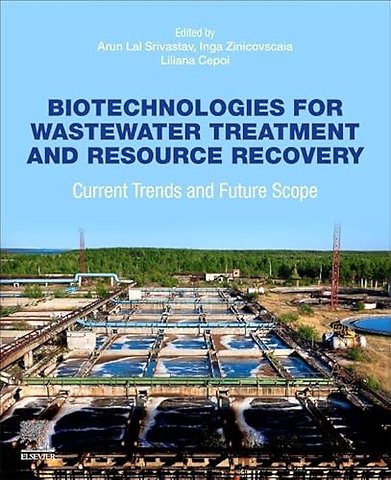1. Wastewater: Generation, Treatment options, Reuse and future of resource recovery<br>2. Significance of biological approaches/bioremediaion of wastewater treatment over physico-chemical methods: A comparative analysis<br>3. Role of bacteria in bioremediation of wastewater and resource recovery<br>4. Recent trends of phyto-remediation for the wastewater treatment and resource recovery<br>5. Role of bio-refineries in wastewater treatment and bio-energy production<br>6. Bio-augmentation for heavy metal treatment present in wastewater<br>7. Wastewater treatment and resource recovery through Rhizoremediation<br>8. Bioremediation of pesticides present in water: State of art and future scope<br>9. Role of fungi in wastewater treatment: Recent trends and mechanism<br>10. Limitations and challenges of bioremediation approach: Alternative solutions<br>11. Integration of bioremediation and physico-chemical methods for wastewater treatment and resource recovery<br>12. Scope of bioremediation of wastewater for emerging water contaminants like pharmaceuticals, microplastics, antibiotics etc.<br>13. Artificial wetlands construction for controlled bioremediation of wastewater<br>14. Valorisation of wastewater treatment through bioremediation approach<br>15. Sustainable wastewater treatment through micro-algae and other biotic community for bioenergy production<br>16. Role of bioremediation of wastewater in sustainable development goals and circular economy<br>17. Role of plants as bioindicators of water pollution and treatment of water contaminations<br>18. Role of bryophytes as biomonitors and bioindicators of water pollution and as bioremediation tools<br>19. Application of modern tools for the real time monitoring of bioremediation approach and its advantages<br>20. Case studies on bioremediation of domestic/industrial wastewater for the elimination of heavy metals/emerging water contaminants/pesticides/ microplastics etc.<br>21. Case studies on bioenergy production and wastewater treatment.<br>22. Case study on the biopolymer production through wastewater treatment using biotechnology<br>23. Feasibility of reuse of treated wastewater through bioremediation approach for domestic or industrial applications<br>24. Industrial scope of recovered valuable resources, types and application: Technical and Economic feasibilities”.<br>25. Future perspectives of wastewater treatment.<br>26. Bioremediation for emerging organic pollutants (pesticides, dyes etc): Present and Future<br>27. Role of biotechnology in the recovery of nutrients from wastewater

